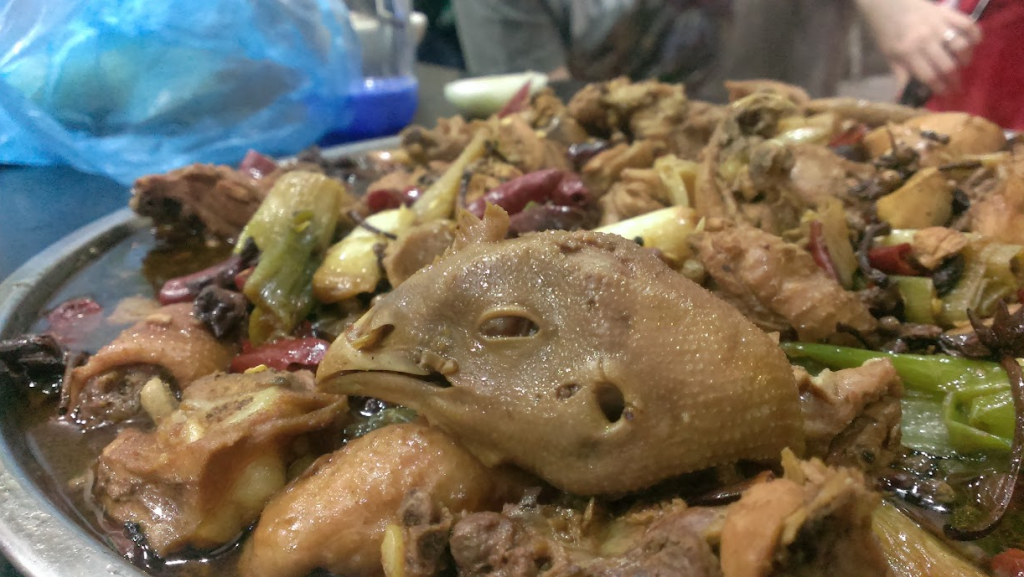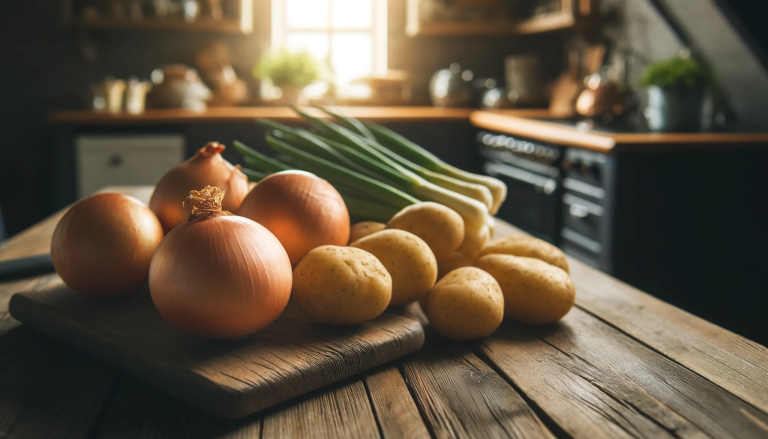
By Larry Billinger
Da Pan Ji, often translated as “Big Plate Chicken,” is a beloved dish that originates from the Xinjiang Uyghur Autonomous Region of China. Known for its rich, aromatic flavor and hearty servings, this dish has been satisfying appetites and warming souls for generations. Let’s embark on a gastronomic journey to understand the origins, the unique taste profile, and the key ingredients that make up this delectable dish.
History: From Silk Road to Dining Tables
The Xinjiang region, where Da Pan Ji hails from, has historically been a hub of the ancient Silk Road, witnessing a confluence of different cultures, people, and, most importantly, ingredients. This dish is believed to have been popularized by the Hui Muslims, one of the 56 ethnic groups in China.
Given the historical trade routes and cultural exchange, it is no surprise that Da Pan Ji exhibits a blend of Chinese culinary techniques and Central Asian flavors. It’s a testament to how food can evolve and adapt, weaving together strands of different culinary traditions.
Taste Profile: A Dance of Flavors
Da Pan Ji is renowned for its hearty, warming, and spicy character. Each bite delivers a symphony of flavors:
- Spicy: The dish employs dried red chili peppers, which infuse the broth with a heat that is robust but not overwhelming.
- Savory: The chicken, stewed to perfection, melts in the mouth, releasing its juices and enriching the overall taste.
- Aromatic: Star anise, ginger, and garlic lend their fragrant notes, creating an aroma that’s both inviting and comforting.
- Earthy: The potatoes, often added to the dish, provide an earthy sweetness and soft texture that balances the spiciness.
- Noodle Joy: Traditionally, Da Pan Ji is served over hand-pulled broad noodles, which soak up the flavorful sauce and add a delightful chewiness.
Main Ingredients: The Heart of the Dish

A classic Da Pan Ji recipe is marked by its straightforward yet aromatic ingredients:
- Chicken: Often bone-in and cut into chunks, chicken is the star ingredient. Its flavors are drawn out through slow cooking, resulting in tender and flavorful meat.
- Potatoes: These are cut into large pieces and added to the dish, complementing the chicken and acting as a sponge for the delectable sauce.
- Spices & Seasonings: Key spices include dried red chili peppers, star anise, ginger, and garlic. Additionally, Sichuan peppercorns are sometimes added for an extra kick and a tingling sensation.
- Vegetables: Bell peppers, onions, and tomatoes are frequently included, each contributing its unique texture and flavor.
- Hand-pulled Noodles: Broad and chewy, these noodles are a staple in the dish. They are known to absorb the rich broth, offering a satisfying mouthful with every bite.
- Soy Sauce & Chinese Cooking Wine: These are essential for depth of flavor and complexity.
In Conclusion
Da Pan Ji is more than just a dish; it’s a rich tapestry of history, culture, and culinary artistry. Its flavors transport you to the bustling trade routes of ancient China, allowing you to taste the mingling of diverse culinary traditions. Whether you’re a seasoned food adventurer or someone looking for comfort on a plate, Da Pan Ji promises a memorable experience. If you haven’t tried it yet, it’s time you took your taste buds on this delightful journey.






It was absolutely delicious, however, it left me feeling nostalgia for surprise bone shards that would leave you awkwardly debating the spit into the napkin or spit onto the table conundrum that many a laowai face.
Thanks babe!!!